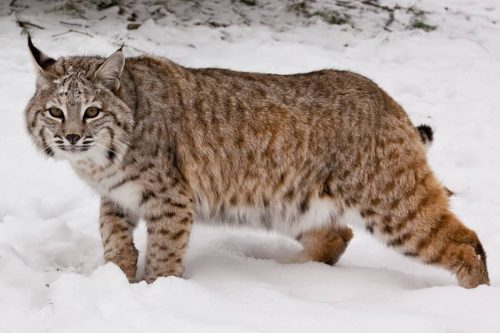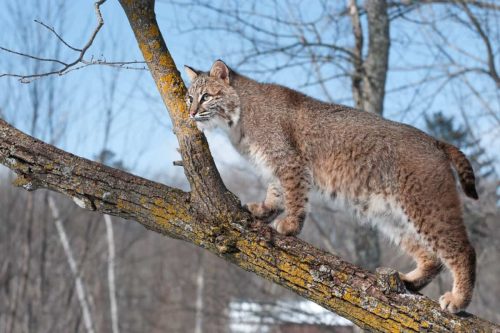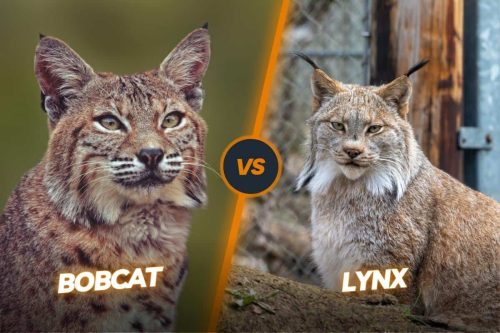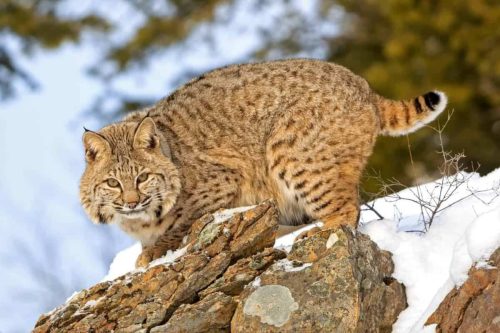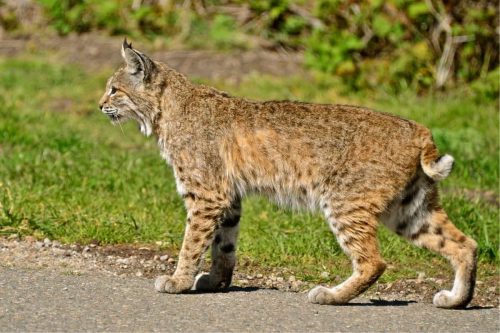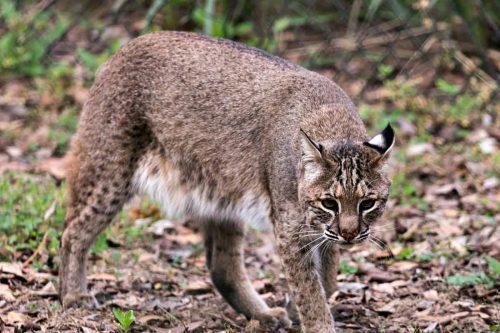Bobcat Habitat: Exploring Diverse Range From Forests to Suburbs
Bobcat or Lynx Rufus is a wild cat that belongs to the feline species. Being a carnivore, they only like to eat meat in the form of small mammals like squirrels, rabbits, rodents, etc. They are solitary animals and adaptable to various kinds of habitats. Most bobcats reside throughout the North American region in the countries like Canada, USA, and Mexico.
In these countries, they like to live in woodlands, coniferous forests, canyon islands, deserts, sage-brush steppe, swamps, rock formations, caves, and broad-leaf forests. These places are ideal bobcat habitats as these places provide plentiful prey and a good cover to hide.

It is extremely important to know the exact region or habitat of the bobcat because these animals could be extremely dangerous for your property, pets, and small children. Bobcats also feature both nocturnal as well as crepuscular features, which means they could come out of their den at any time of day or night and could do anything harmful to you.
In this article, we are going to explain the bobcat habitat in detail to alert you about the exact areas of bobcats.
Contents
The geographic scope of bobcat
The majority of the population of the bobcat exist in the United State of America. According to the defenders of wildlife organizations, 70% of the bobcats in the North American region live in the United State of America. However, there is also a very stable population of bobcats in southern Canada and the Mexican region.
They are adaptable to a variety of environments. On the northern side, they mainly live in the boreal and coniferous forests. In the southeast region, you will find them in the coastal swamps and hardwood forests. In the southwest region, you can observe them in the deserts and scrublands.
The natural habitat of the bobcats
As you know bobcats are carnivore animals, so their diet includes the meat of animals like rabbits, rodents, deer, mice, raccoons, etc. It means that they can visit various places in search of these animals. Mainly these territorial cats prefer to reside in rugged cliffs, semi-desert regions, agricultural sites, mountains, canyons, swamps, brush steppes, and hardwood forests.
They are more attracted to places having a lot of cliffs, rugged outcrops, and bluffs. You can also find bobcats in very thick vegetated regions. Sometimes, they also like to live in completely isolated areas. Nowadays, people are also witnessing a lot of bobcats in suburban areas where they are living alongside human settlements.
Bobcat shelter
Shelter is a very important element for the long-term survival of any animals in the wilderness. Bobcats also need to have proper shelter for facing wild as well as light environments. They also use these shelters for fleeing from dangerous situations and hiding from their predators. For this purpose, they make a lot of dens according to their needs.
Some of these shelters are very spacious and very well designed which makes for permanent residence and these shelters are called natal dens. The list of typical shelters includes caves, thickets, hollow logs, trees, and undergrowth heaps and ledges of stones.
Why are bobcats highly adaptable?
Bobcats are easily adjustable in various kinds of habitats as they are capable of hiding themselves anywhere and also so good at collecting a good amount of food even in very harsh regions. They can easily manipulate their predators by changing the color of their fur coats.
Whenever the change in season happens, they also change the color of their fur coat accordingly. They adopt special coat colors for both winter as well as summer seasons. The adaptability of the bobcat is also good due to their extraordinary abilities like jumping, climbing, and hunting.
Moreover, they also come with very sharp claws and jaws which are highly helpful in hunting down their prey. This thing also improves their adaptability. The lifestyle of the bobcat also plays the part in increasing their adaptability as they can come out at both night and daytime in search of prey.
Where do bobcats sleep?
Bobcats are both nocturnal as well as crepuscular animals. It means there is no specific sleeping routine for bobcats. Mostly, they come out in the early dawn and dusk time in search of prey. Many times, bobcats were seen sleeping in the trees and inside the caves. Bobcats always look for some safe place for sleeping purposes. They don’t take any risks while sleeping in the wilderness.
Can bobcats face snowy conditions?

Bobcats don’t like to live in snowy regions. That’s why you will not witness a lot of bobcats in the snowy regions, especially in the wintertime. They prefer to live in warmer regions like deserts, swamps, and forests. The snowy mountainous region is usually the last priority of the bobcats.
They might not be interested in living in the biome having very severe winter weather but it doesn’t mean they could not survive these harsh winter environments. They are equally capable of dealing with these harsh winter conditions. For this purpose, they can easily change the color of their fur for easy blending in the environment.
In this way, they can face the weather and also hide from their predators. Bobcats might not prefer to live in snowy type regions but their other lynx family cousins like the Canadian lynx, Iberian lynx, and Eurasian lynx are much fond of these types of regions. They are highly adaptable to these kinds of environments as they come with very long legs and specially designed paws for snowy regions. Source.
Some basic facts about bobcat habitat
- North America is the native territory of bobcats.
- Bobcats like to mark their territory with the help of urine odor. It is a good source of bobcat den identification.
- Marking signs are also utilized as a source of communication.
- Female bobcats intentionally emit the urine odor at the entrance of their dens as a warning sign for other animals that the den is already preoccupied.
- Bobcats prefer biomes where they can have a lot of woods, trees, and mainly warmer conditions.
- They are adaptable to all types of environments like colder, warmer, and semi-urban settlements.
Frequently asked questions
Conclusion
Bobcats are highly adaptable animals. They can let themselves in any kind of environment unless it meets their essential needs, like good hiding places, availability of small mammals which they can hunt for food, cozy nocks, and good vegetation where they can make their homes. Indeed, bobcats can survive in cold climates but they prefer to live in warmer areas.
The body of the bobcat has also not been designed for snowy-type regions. However, they can also easily adjust in the snowy type regions if they have long front legs, and broad paws which you can find in other Lynx genus species like Canadian Lynx.





